(Design Diary) Workworkworking on Workworkwork
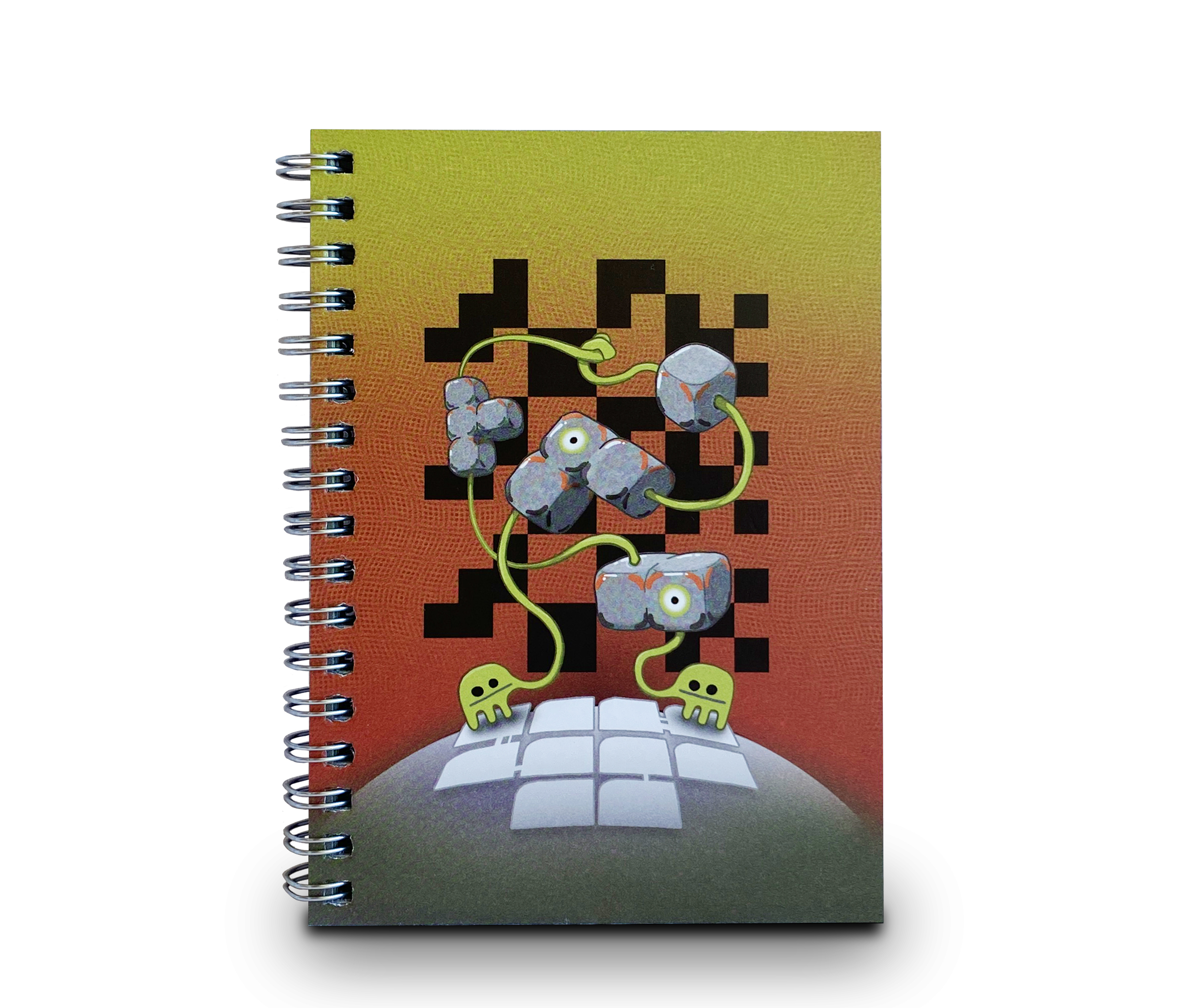
Hi! I'm Blaž Urban Gracar and this is a design diary about how I made my newest puzzle book Workworkwork. So far, I released two other puzzle books called LOK and Abdec, made the video-game LOK Digital in collaboration with Ferran Ruiz Sala, designed the All Is Bomb card game and will release my big puzzle board game with cute figurines called Herd at the end of this year.
Please note that the following diary will contain some spoilers, although I will try to keep them relatively vague (and will explicitly warn when the spoilers will get heavier).
PROTOTYPEPROTOTYPEPROTOTYPE
It was a sunny day in June 2024, I was at my partner's apartment in a small village in Croatia and I felt uneasy. My mind was occupied with the development of Herd; I was stuck in a loop with a particular design problem (late-game mechanics were clashing with each other) and my mind urgently needed a break - so I came up with a small prototype, sketching out 10 puzzles in about an hour. It was about two small workers and a path drawn between them that passed through different blocks on the grid, connecting them along the way. The main inspirations were all the logic paper problems I was solving at the time - I was hooked on the daily puzzles of the Cracking The Cryptic Discord channel - plus the Zachtronics automation mind-twisters and path-finding train games of Draknek & Friends. I wasn't quite sure what I was making, but it felt chonky, which is always a good thing. The prototype included the mechanics that would eventually be introduced in the first two chapters of the book. I applied my classic hand-drawn filter in Photoshop, exported the JPGs and shared them through the social media and Discord channels.
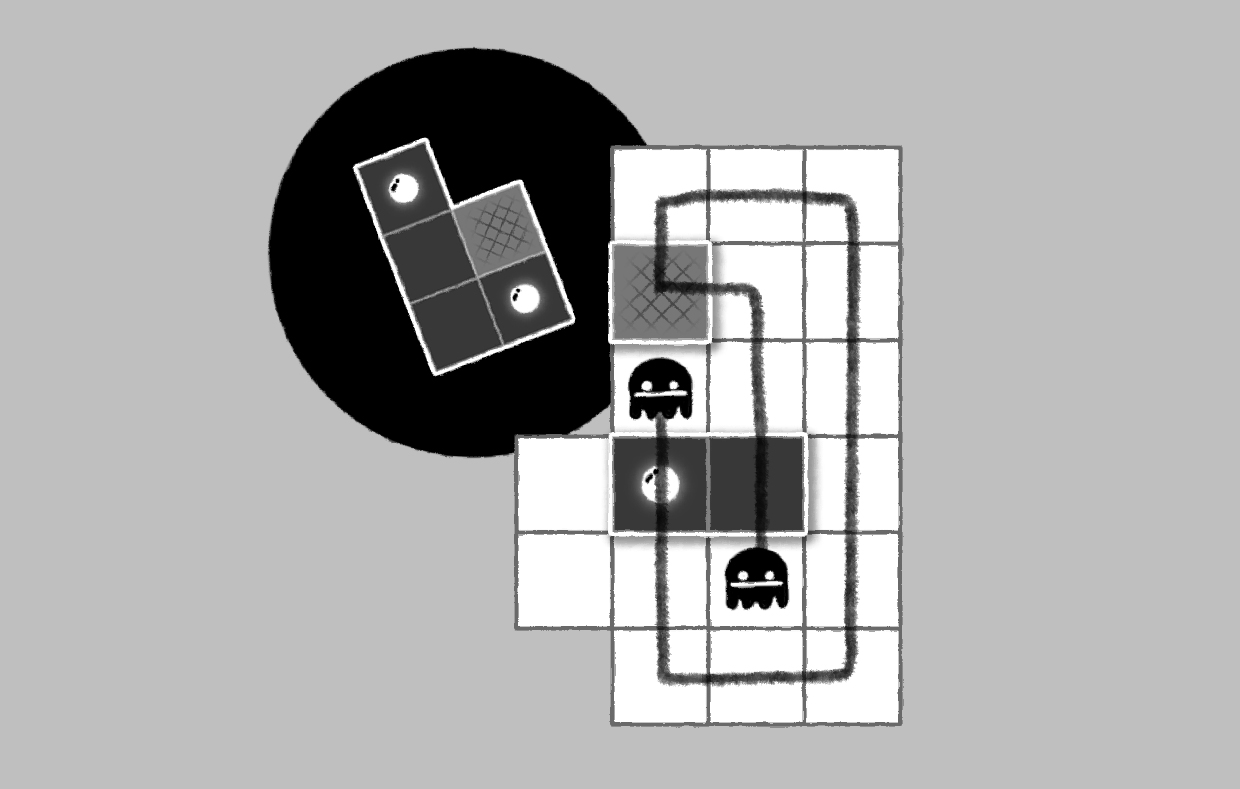
A solved example from the prototype
A lot of the first comments were "Woah, this is very hard to visualise" and "I can't wrap my head around the ruleset." However, those who managed to solve their way through the whole set generally liked its pure logical deductions and the potential for expanding the mechanics. Some people even made their custom puzzles that very first day, including Xxuurruuii and TheGreatEscaper, two fantastic creators from the puzzling community, who both independently of each other explored the notion of what eventually became the main mechanic of chapter 3.
The thing is, I make a lot of one-off prototypes, usually just to refresh my creative juices while working on a bigger project. I considered the worker prototype as just one of the many sidetracks and I archived the files, as I got back to constructing sliding and stacking challenges of Herd.
There was something about the idea, though, that kept me returning to it in my mind, like a tongue routinely inspecting a suspiciously wiggly tooth. Every month or so, I reopened the small set and replayed the puzzles, because it felt... interesting to solve them. The visualisation aspect was truly a struggle, but each time I got through around half the set, I suddenly locked in. My brain attuned and started seeing the connections and rotations, bouncing my attention between the grid and the showcased object, marking small logical steps in a steady rhythm. It was clean and sharp. It felt like it distilled the pleasure of the busywork, of slowly and diligently building something up for the sake of pure construction. I realised I would someday make a full game out of it, even if it was not yet ripe for a proper bite. LOK started as an unassuming prototype to which I returned months later with a full force - the same with Abdec. It was like I was standing on a terrain that was bubbling underneath the surface - I wasn't yet sure what was there, but whatever it was, it was abundant and fertile.
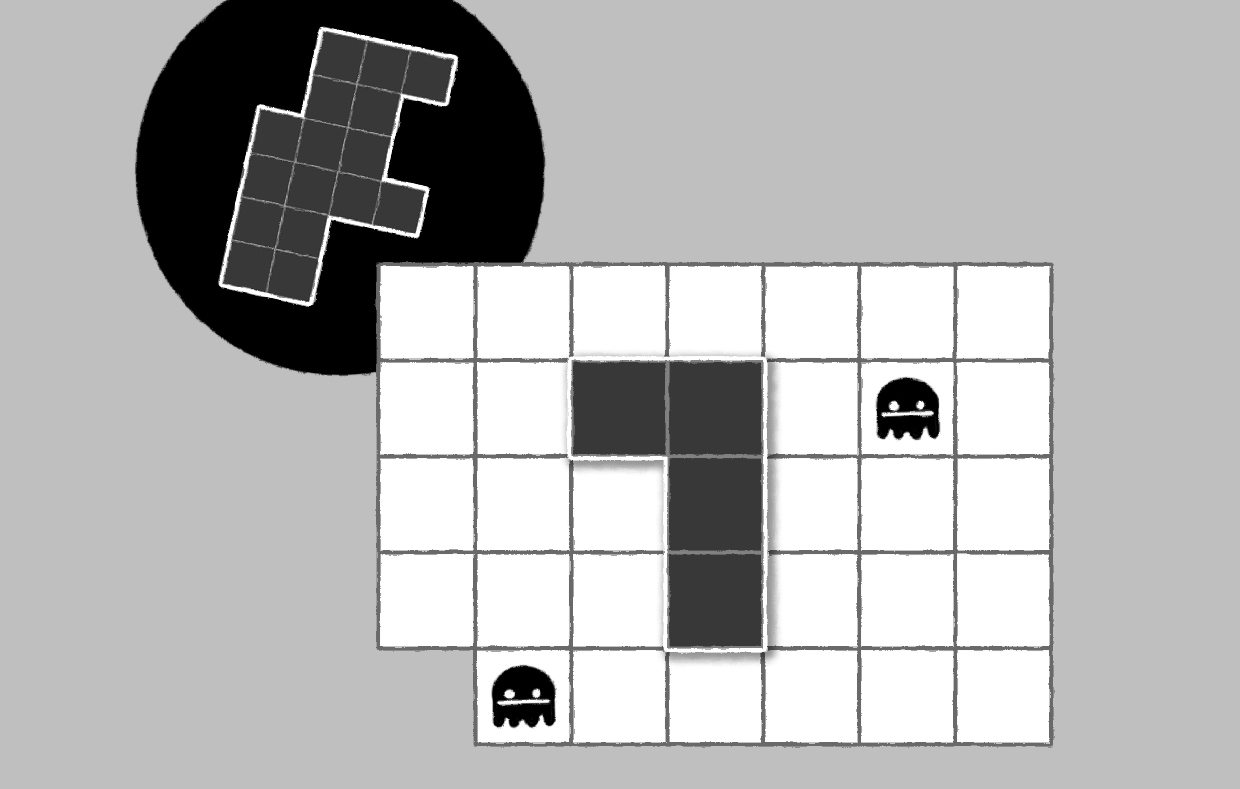
A few puzzles from the prototype survived all the way to the final version!
DRAFTDRAFTDRAFT
The moment came in October; I was in Italy with my partner and her daughter, exploring Toscana's hot springs. We were situated in a beautiful old house in the middle of nowhere, surrounded by forests and vineyards. I had my notebook with me, "just in case", and sure enough, the sights and smells and the nature stimulated my brain juices to start flowing. At that point, Herd was sort of finished and left in the drawer to marinate, so I didn't feel guilty for guiding the inspiration towards Workworkwork. In my mind's eye, I saw an H heptomino overlapping with itself in a gorgeous and unexpected way - this eventually became puzzle 33 in the book. The next one I made was puzzle 30. Then I made proofs of concept for chapters 4 and 5's mechanics.
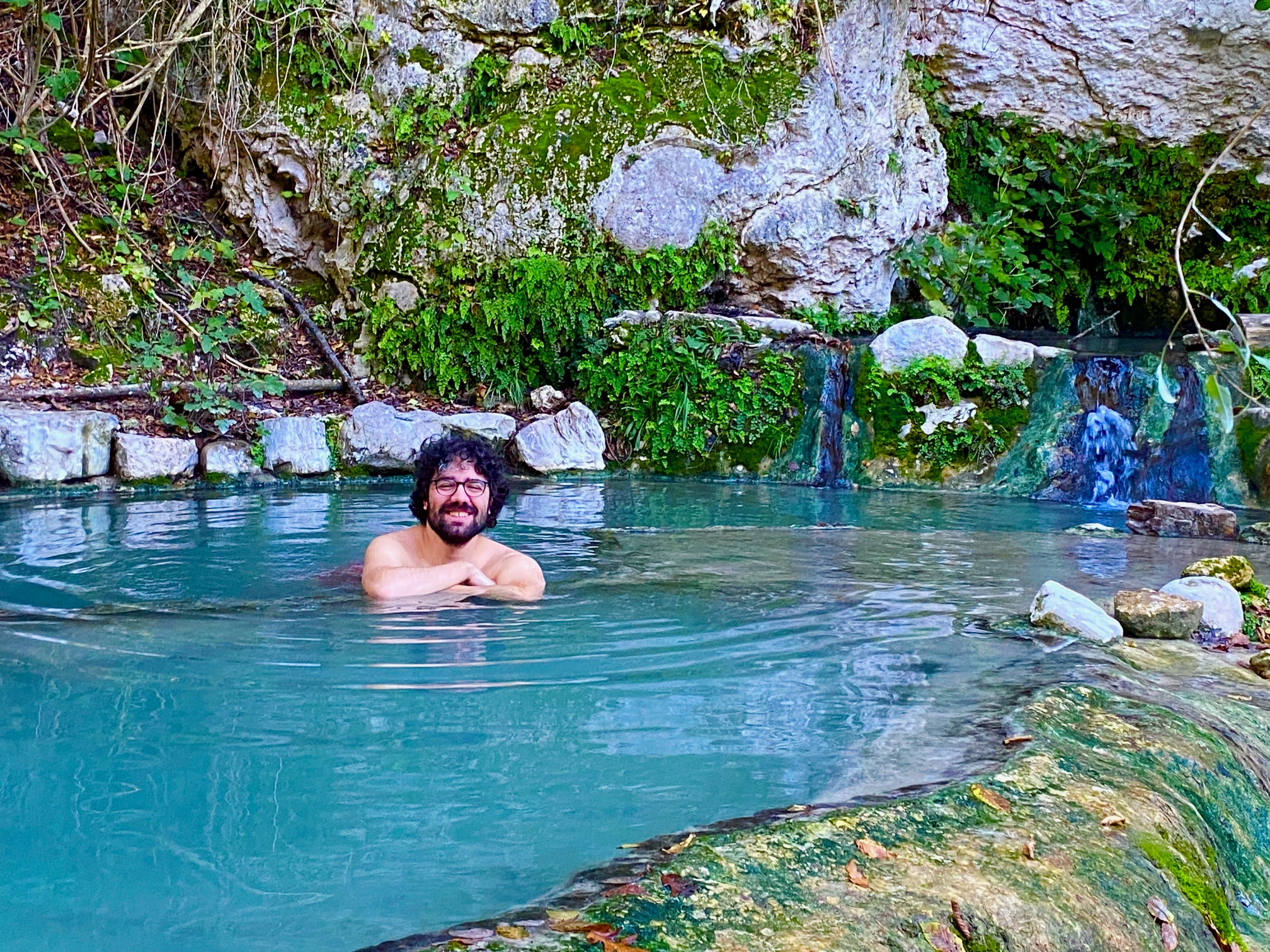
Getting inspiration in a Toscana's hot spring
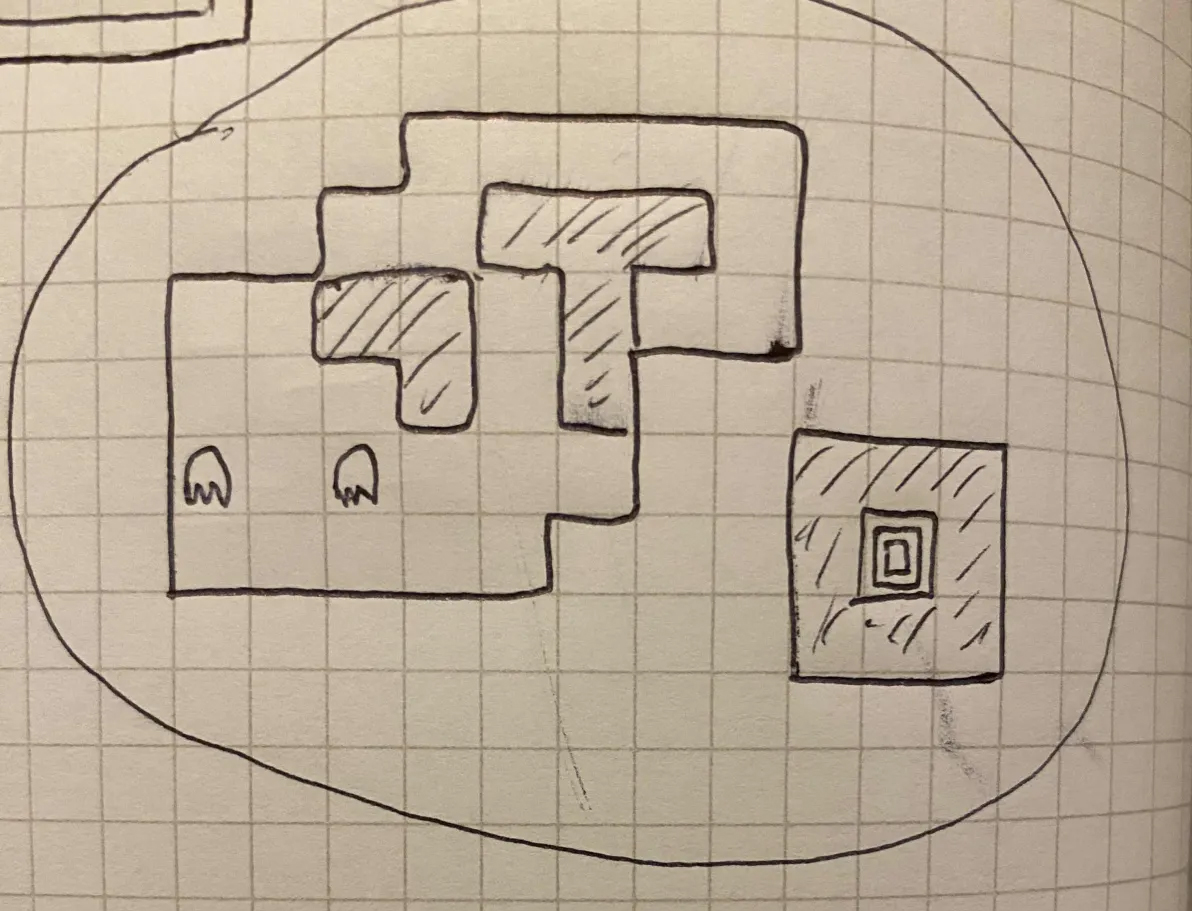
Puzzle 30's sketch in the notebook
When I came home, I opened up Photoshop to transcribe the puzzles - but first, I had to define the visual aspect. The original prototype was black and white, but going into the full development, I decided to use colours. With Abdec, I tried to avoid colours in order to print the books cheaper, however, part of the concept were the "burnt pages" (which thematically obscured information), which of course used browns, yellows, reds. I was looking for greyscale alternatives, such as ink spills, but nothing looked as cool as crumbling scorched pages, so in the end, I conceded and ordered the colour prints. This meant that most of the sections were technically in black and white, with a few strong coloured pages sprinkled in between, which felt as under-utilising the printing possibilities. With Workworkwork, I just went all-in, using the whole colour spectrum.
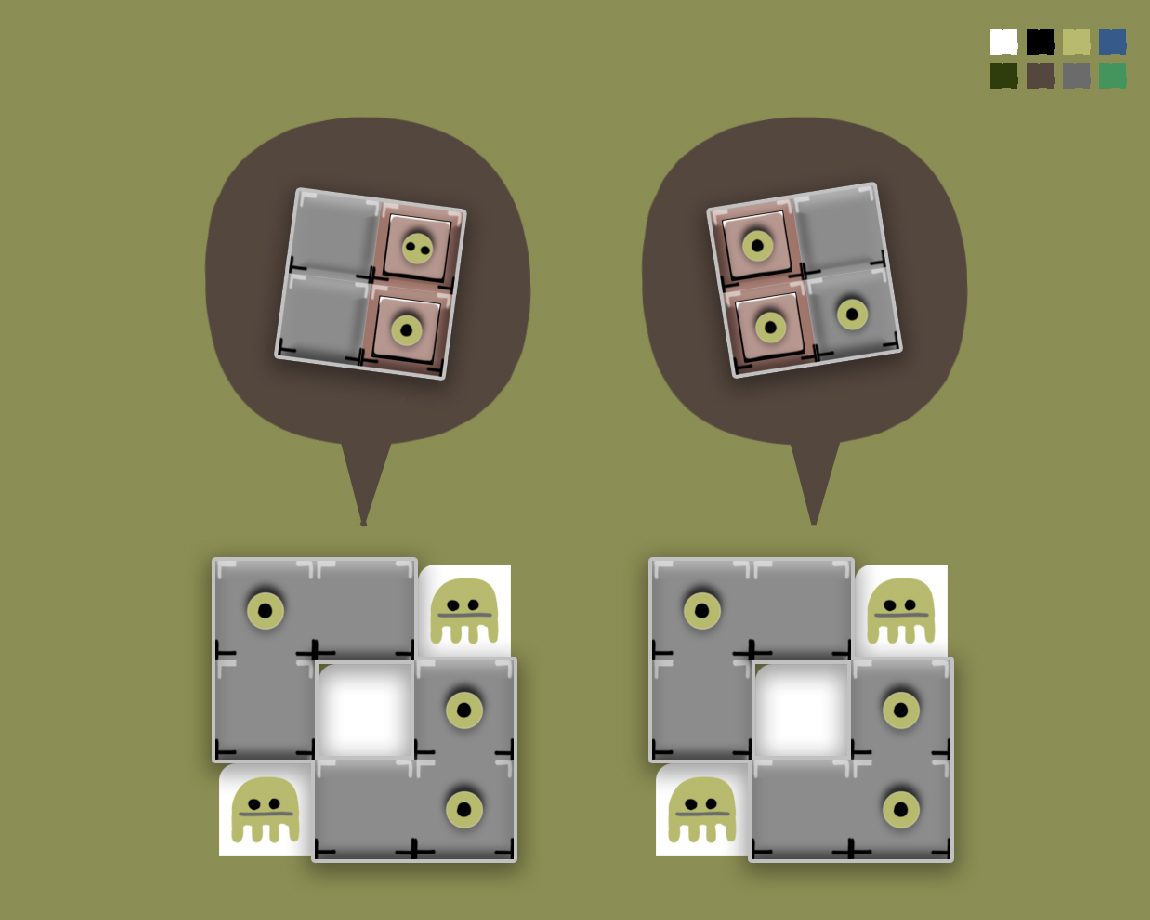
Early Workworkwork's graphic design
Over the next two months, I basically sketched out the whole structure, making around 60 puzzles. This included the finale sequence, which cemented my confidence in the project, since I love a good ending in a game (something that I think is often overlooked by puzzle designers) and this one came very naturally, expanding the core concepts in a very explosive and satisfying way. Each game comes out at its own pace, but I learned that the quicker the first draft is finished, the better and more rounded the game is in the end. My rush to the finish line was also a reaction to the prolonged development of Herd, which was difficult to encapsulate into a single vision without many false starts and reworks of puzzles. On the other hand, Workworkwork's system was surprisingly easy to work with, I just had to come up with an interesting output shape, place some pieces onto the grid and an interesting solving path would appear on its own. It was the case of picking out the favourites instead of squeezing water out of the stone.
I find it interesting how in each game's development, my design sensibilities shift from throwing everything at the wall and seeing what sticks, which produces some of the most interesting and juicy puzzles - a lot of these early puzzles survive the whole development due to their immediacy - to understanding what makes the system tick and as a result carefully going through the permutations, seeing which idea I hadn't yet explored fully and making a clean, mature puzzle out of it. I think that the mix of both approaches is essential to any healthy, well-rounded collection and I was happy with the composition of the first draft's sequence.
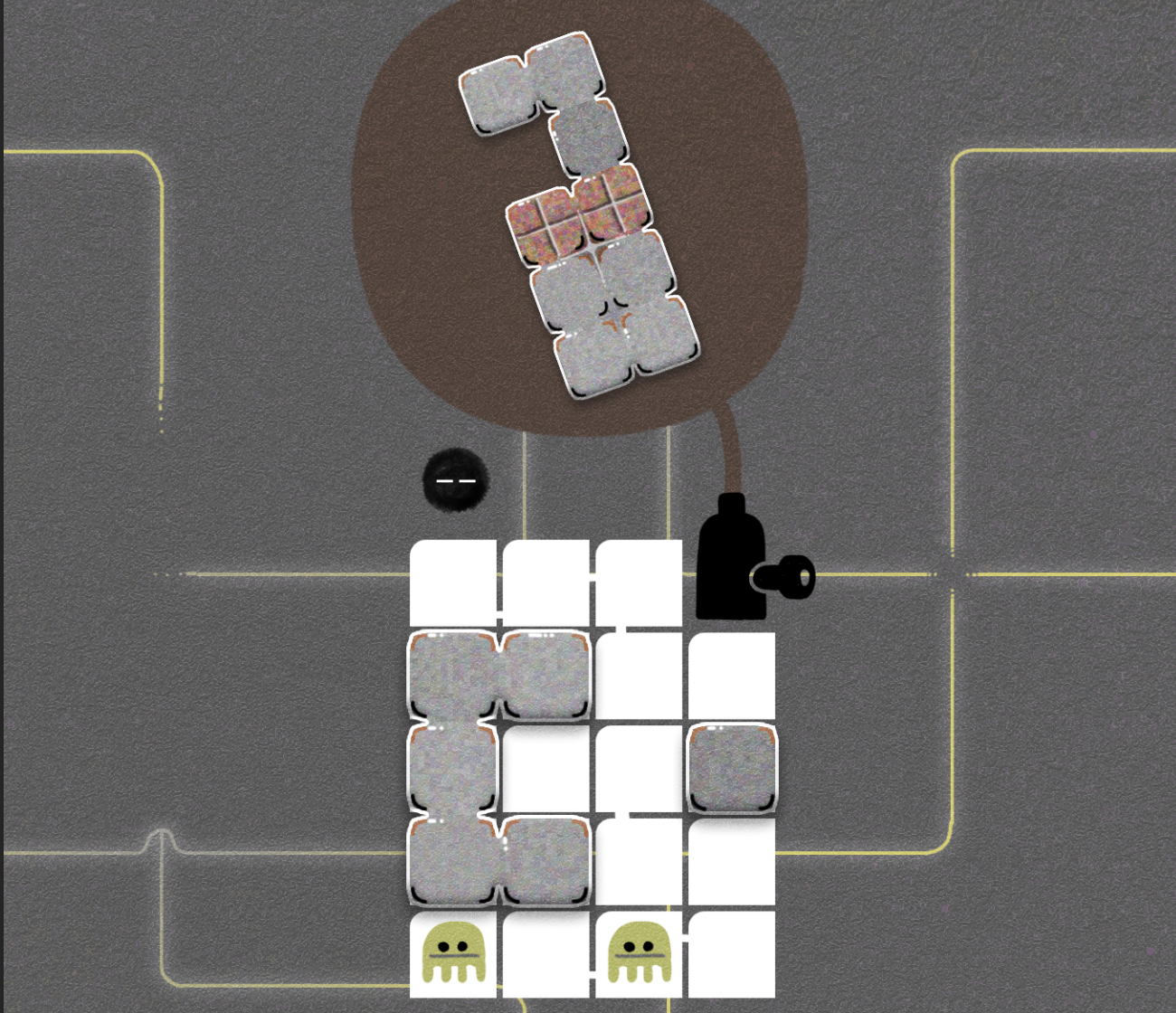
During the development of the first draft, I already cut a lot of puzzles, just because they were missing a bit of a spark
However, I soon realised that the first part of the game still didn't work. Early playtesters still struggled with understanding the base ruleset. I lean towards explaining the rules through practical examples instead of spelling them out completely and I tried the same thing with Workworkwork, instantly dropping the player into the weeds with minimal instructions. But this approach failed; there were too many unintuitive mechanics I had to offload onto the player, especially the funky way the blocks don't actually combine on the grid (where they could realistically bump into walls and each other while getting assembled), but above it, in an imaginary freeform space. Even in an abstracted paper puzzle environment, people still tend to search for real-life parallels.
So I also focused on the lore of the game. It helped for the players to see illustrations of two workers extending their freakishly long arms, lifting the block pieces high above their heads and welding them in an actual "freeform space". The weird sci-fi setting appeared on its own, since I always like to push the mechanics to their extremes and it was logical that the workers would eventually be building the whole universe. As usual with my games, the mechanics of the system influenced the theme and story and not the other way around, but at the same time, adding a theme of any sort smoothed the introduction and instantly made the game more attractive. I also included a bunch of examples to really build the base understanding and pushed the introduction of the rule discovery aspect all the way to the third chapter, where I could finally let the solvers swim on their own. The result was that some players complained about being too hand-held, which I paradoxically considered as a win, since they were complaining about it after smoothly playing the book well into it the late game.
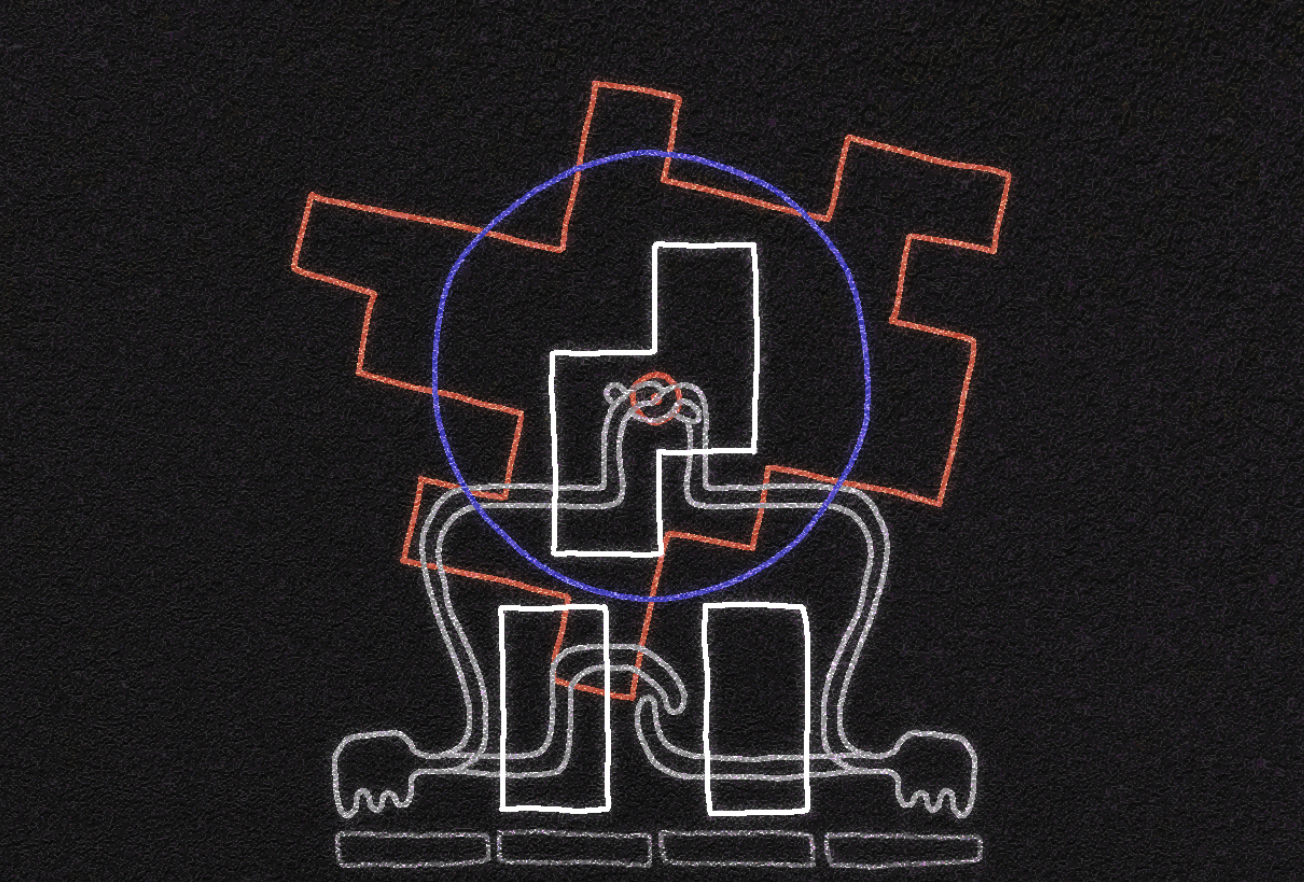
When adding lore to the book, I presented it as half-translated tablets of unknown origin
After finishing the first draft, I let it loose onto a wider range of playtesters and they generally enjoyed it. The biggest confirmation of the project was the feedback of the hardened paper puzzle veterans who hadn't really vibed with the loose constructions of my previous books (both LOK and Abdec aren't as logically pure - LOK doesn't even have unique solutions), but they completed Workworkwork in only a couple of days, complimenting the solving pathways. I used their video playthroughs in the later stages of the development to check certain logical assumptions, since they found shortcuts I haven't even considered. In a sense, it was strange seeing all the positive reception; I put the least amount of time into making the first draft out of all of my games, only two proper months of work, and it was turning out to be my most fleshed out design so far.
FINISHFINISHFINISH
At the start of 2025, I decided to let Workworkwork sit a bit, for all the accumulated impressions to settle down in my mind and to focus on publishing Herd. My plan was to add the finishing touches to Herd, start the manufacturing process in February, get the finished products in April and push it on all channels in May; with Workworkwork projected to be published in October, allowing healthy 6 months in between the projects' releases, while still having them both prepared for the Christmas season (which is very important for my small physical game business).
This schedule... unfortunately didn't quite work out. Herd's books and boxes were manufactured in April, but I was still waiting on the figurines. A local plastic manufacturer overestimated their capabilities and after many delayed weeks they ultimately pulled out of the deal. It was late May and I was suddenly left with 1000 boxes and books in the warehouse, missing the key components and the means to acquire them. After a few days of panicking, I found a company in China that took over the project, but they could only finish the figurines in October the earliest.
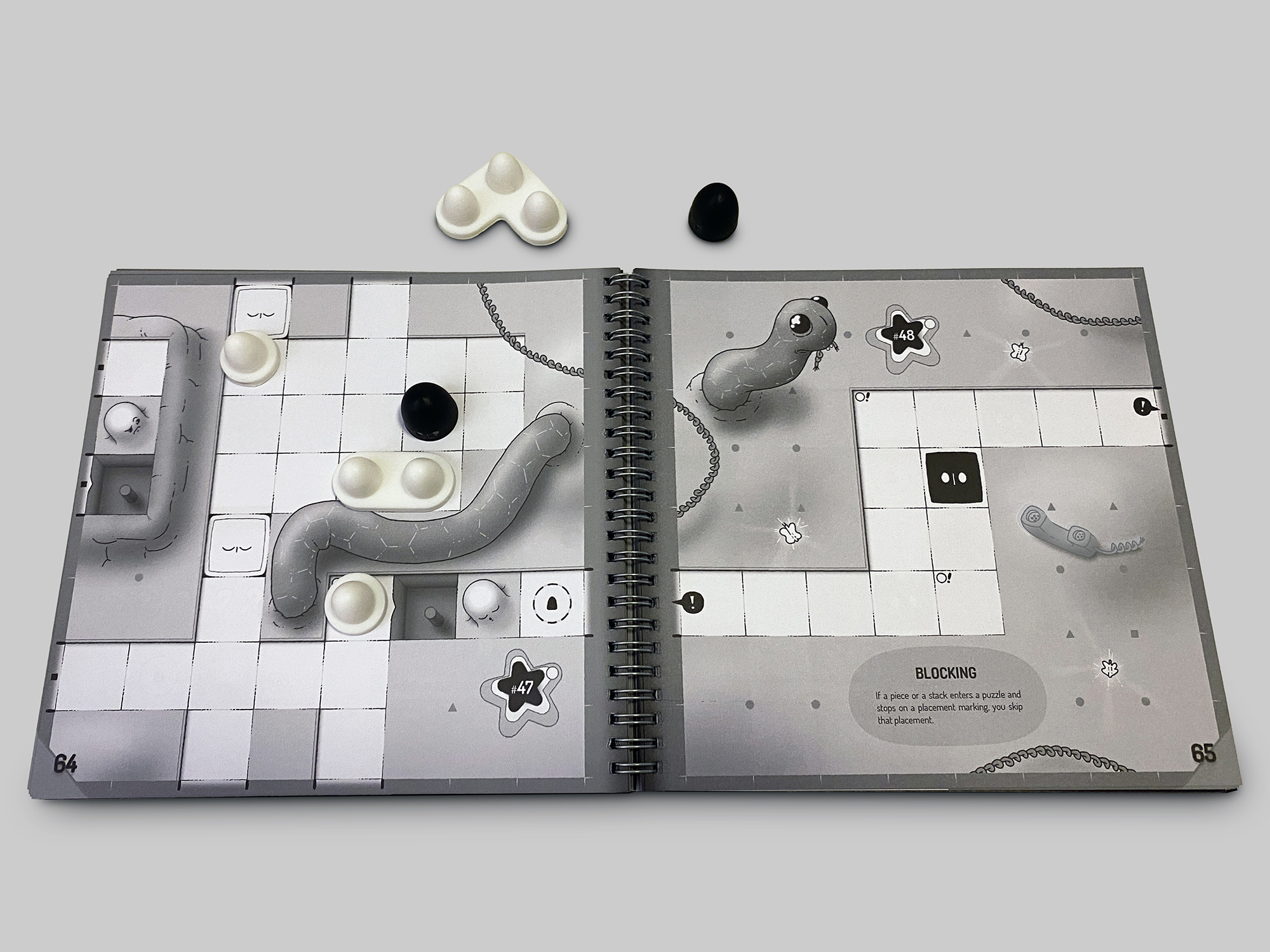
A shot of Herd in play
So I was put in front of a tough decision: should I postpone everything, keeping Herd as my next published project, releasing it at the end of 2025? Or should I switch up the order, rushing with Workworkwork's development and try to release it in Herd's place? I decided to at least try the second option - to finish Workworkwork as soon as possible, hastily release it as a PDF the exact moment I'd be happy with its structure and set up the preorder for physical books, in order for the game to be out there at least 4 months before Herd, still allowing for some breathing space.
I gathered up a playtesting group of around 20 dedicated players on my Discord channel and we got to work. A lot was already done within the first draft, but the last 10% of the development are always the hardest. I was relatively happy with the first two chapters, but the third one needed proper restructuring (the dreaded curse of the middle game pacing), the fourth one needed a complete visual rework (the orb's connectivity was difficult to parse) and a lot of the fifth chapter's puzzles were only sketches of ideas, not yet fleshed out into challenges worthy of being in the last section. I also had a mechanic left over that revealed itself as a possibility right at the end of making the first draft. I like to explore a system fully, exposing all of its combinations and interactions, even if this sometimes reveals that a ruleset is not actually as stable as it appears; but instead of sweeping the edge cases under the rug, I like to put them under the stage light, try to make them work, strengthening the mechanics in the process. This left-over idea was eventually implemented into appendix, which also satisfied my inclination to have at least one expansion in my puzzle books.
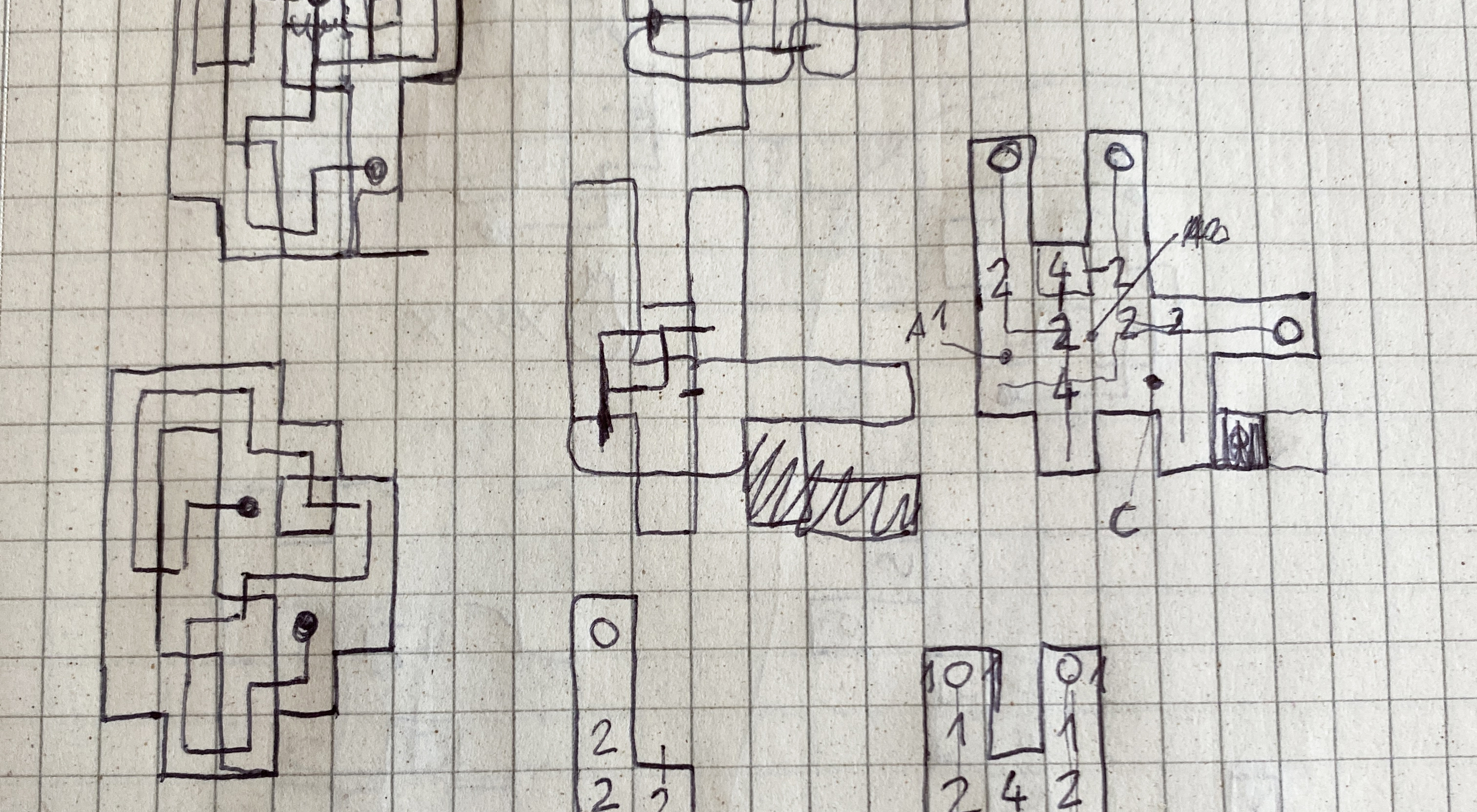
Throughout the whole development, I always fleshed out the puzzles in the notebook before transcribing them into Photoshop
Another big aspect of the late game development was creating the meta layer. (Please skip to the next section "Releasereleaserelease" if you don't want to be spoiled about Workworkwork's post-game in any way - there will also be some spoilers of my other games.) I always want to offer deep secrets for the most patient players and even though Workworkwork is inherently drier and more direct than my previous books, I still felt there was space to apply mysteries. One idea were the letter codes. I borrowed LOK's artwork puzzles concept of having a challenge at the beginning of each chapter, referencing that chapter's mechanics. I set up a letter code system that worked surprisingly well, being deciphered by the playtesters without any additional hints, while still being uncrackable when first encountered. This was layer one, adding a few additional puzzles to the game. I also made two hybrid puzzles, one mixing the book's mechanics with LOK and the other with Abdec.
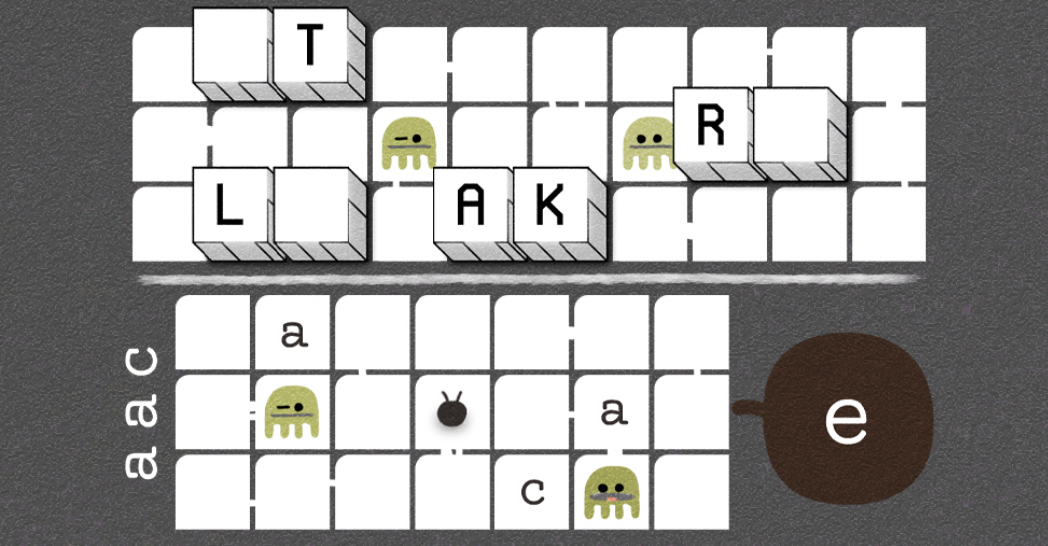
The two hybrid bonus puzzles
Layer two had to be something that would stretch across the whole book. I didn't want to just invent a bunch of different obscured puzzle types and scatter them throughout the pages. At the same time, the playtesters started asking me about what would be the secret link of this game. I realised that there's now an expectation for a secret link for all of my games, since I included it in both LOK and Abdec (and there's one in the upcoming Herd as well). Secret links provided access to the craziest, most involved mechanics of each game. So I decided that the overarching layer two of the book would be a way to acquire the link (not yet worrying about what would actually be the content on this URL).
Another thing that the playtesters wondered about was a pattern of eight colours that was present in the upper corner of each page; they were suspicious it might be another mystery. However, its inclusion had a far more trivial origin - it was simply a palette of colours I liked and selected as the base of the visual identity of the game back when I first made the graphical template of the puzzles. I pasted the pattern on each page to help me anchor the graphics of the whole book and after a while, I left the pattern there just because it was a pleasing part of the composition.
But I wondered: is there a way to make this colour pattern part of the layer two? Of course there was. The letter codes of layer one had exactly 8 different elements - and there were exactly 8 colours in each pattern, prompting me to additionally encrypt the secret knowledge of the letter codes into the colour codes. It was a natural progression from layer one, sprinkling a few deeper puzzles across the book, but more importantly, I could make one extremely long colour code that would continuously run from a page to a page, culminating in a huge puzzle at the end of the book that would provide the key for the secret link. I calculated the length of the code based on the length of the book, sat down and made the final challenge. I'm still surprised how well the puzzle works, given that it was dictated by how much space it had to fill.
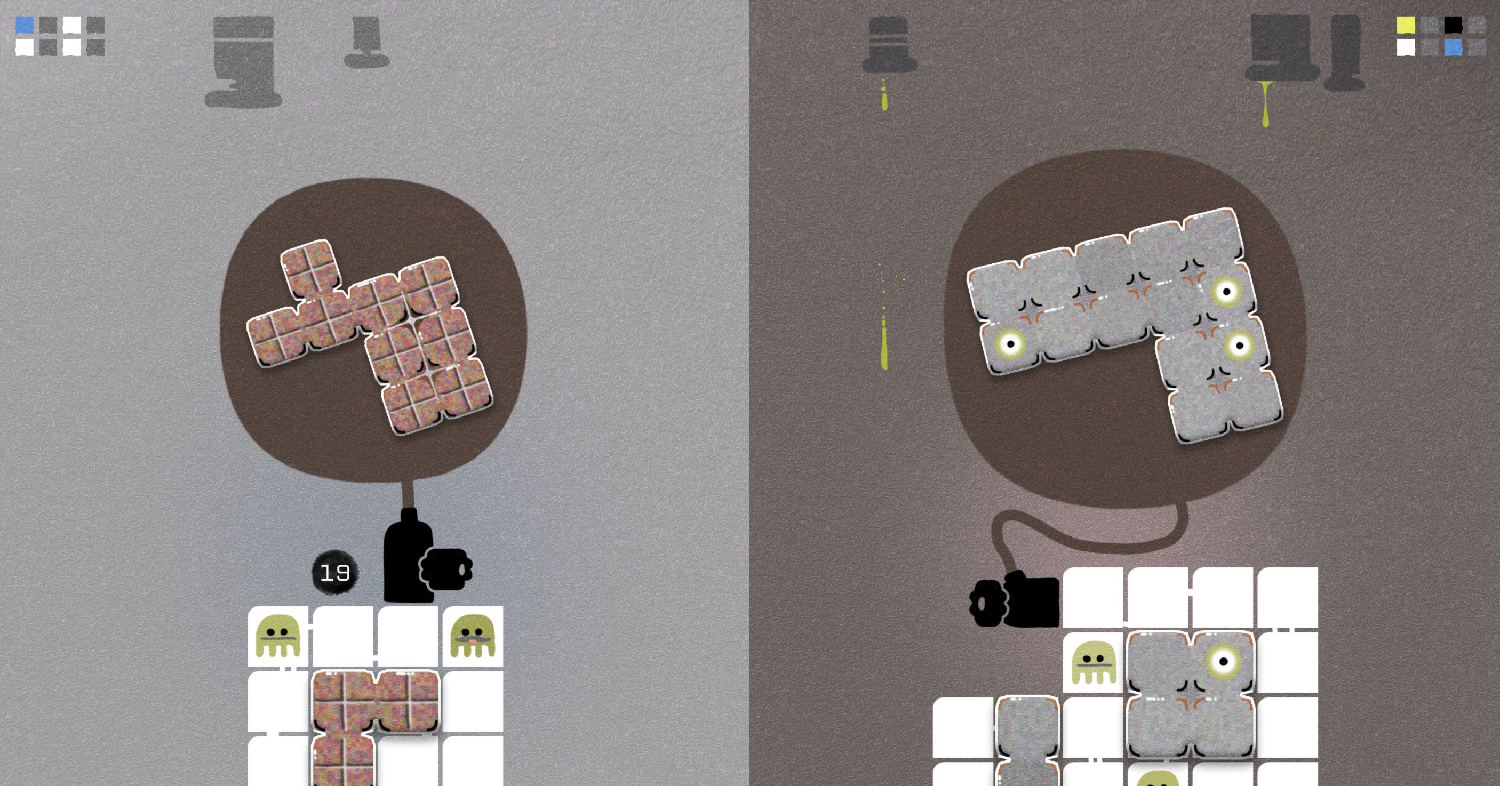
The colour patterns in the corners of the pages
I was convinced I made the best meta puzzle of all time. However, when I posted the updated PDF in the group chat, the responses were mostly lukewarm. One playtester heroically transcribed the whole code and enjoyed the big puzzle, but others just didn't want to bite into the challenge. I realised I created the ultimate busywork puzzle - it wasn't about aha moments, but about a lengthy, tiresome transcription that had a potential to sour the late game experience for the majority of the players. It was clear that the long code had to be cut. For a few days, I thought I was back to square one in terms of the meta game development. But after some thought, I decided to retain the smaller colour puzzles that were hidden in the book, remove the long code - so there was no pattern in the corner of the pages anymore - and encrypt the big puzzle in some other, more approachable way. This is how I came up with the front-page / back-page problem that is part of the final product.
I still had to make the actual content on the secret website. With LOK and Abdec, I added the links only to the second editions, which allowed me to approach their systems with a fresh mind. It's hard to come up with a good idea that feels like the appropriate reward for someone chasing the very last drops of the game. For Abdec, the URL addition actually became the "true ending" and I only came up with it because of the few months that were between the PDF release and the book release. But thankfully, I did come up with a cool idea for the Workworkwork secret expansion in the tired last few days of development. Thinking about which element of the puzzle still wasn't explored fully and hoping to keep the introduction of additional elements on the minimum, I focused on the path itself. What if its directionality mattered? The idea did demand for a new grid element, but it felt like a natural expansion of the system. I quickly sketched out a few puzzles and it turned out to be a fertile concept - I made around 12 usable puzzles in 3 days and compiled them into a tight sequence, although I was still unsure about the expansion's ending. But it was enough to feel comfortable about it; it was time to wrap the development up.
RELEASERELEASERELEASE
On June 20th I released the game. I still left the secret expansion partially unfinished, but I considered the main book as complete and was happy how it turned out. It's hard to say how different the game would be if I'd release Herd first and had time to tweak Workworkwork over the whole summer; I'd probably mull over the post-game content more, but I feel like there was a certain immediacy to the project in any case that I had to catch as a lighting in a bottle. LOK was similarly done quickly, only in 6 months, and I had all the time in the world to finish it - some games simply come out fast and fresh.
As planned, I published the PDF and set up the preorder of the physical book. I was anxious about the preorder; I like to hold a product in my hand and check it thoroughly before signing it off as purchasable, but I wanted the release of Workworkwork to feel like a single, definite event. I didn't send the file to the printers just yet - I gave myself a deadline of two weeks, just to be sure about the game being logically bulletproof by exposing it to the masses. In the following days, some mistakes actually were found: they mostly consisted of unintended solutions that arose from not picking up all pieces that were on the grid. The ruleset allowed for skipping elements, but this was a blind spot during the development, as I thought that maximising the solution space was the only workable approach. There was also a big mistake of the appendix straight up not being solvable due to a missing worker, which I quickly patched with a PDF update. And even after I thought that all the bugs were squished and I finally sent the files to the manufacturers, a small inconsistency was still found in chapter 5 (which most players won't ever notice). Oh well, something to fix for the second print run.
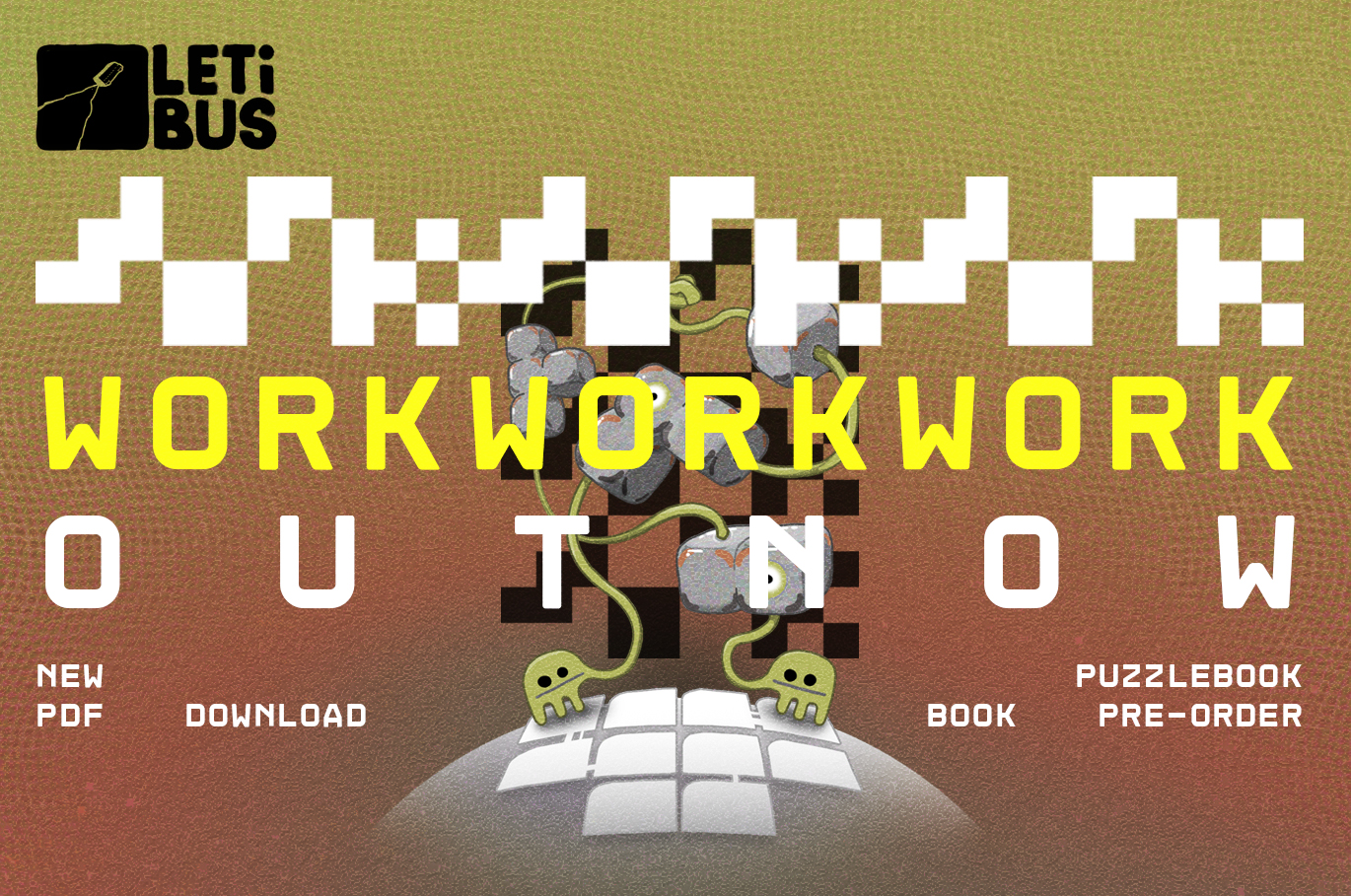
The promotional banner for the release
All in all, I think the release of the PDF was a success. People responded really well to the game. As expected, they struggled a bit in the first few puzzles due to their brains calibrating to the demand of the heavy visualisation, but the game opened up for them in the later chapters. A lot of folks commented that Workworkwork was my best puzzle book so far. For 3 days, the PDF was on the first spot on Itch.io's list of the most popular physical games. OldCaptainWZJ recorded a walkthrough of all the puzzles, explaining the logic paths of the solutions. Both Icely and Competor recorded playthrough episodes (with Icely actually programming a crazily involved digital adaptation to help with the visualisation). The preorders steadily dripped into my inbox. I felt really good, like I was floating above the ground. If you played or will ever play Workworkwork - thank you!
I still had to finish the secret expansion. (The rest of this paragraph spoils Workworkwork's post-game.) Xxuurruuii, the creator that already made custom puzzles when I first posted the prototype, started sending me notes and challenges - apparently, a group of Chinese solvers had been discussing the secret expansion and making custom puzzles. One of the challenges, made by Xxuurruuii themselves, was so great that I included it as a guest contribution. For the longest, I also wanted to make a puzzle that would produce an infinity orb, which was finally possible with the eraser mechanic, and I capped off the secret expansion with a series of edge case puzzles that explored what happens if you input a block over an eraser berry. It took me a couple of additional weeks after the release, but on July 4th I updated the secret website with the final PDF. Workworkwork was now content complete.
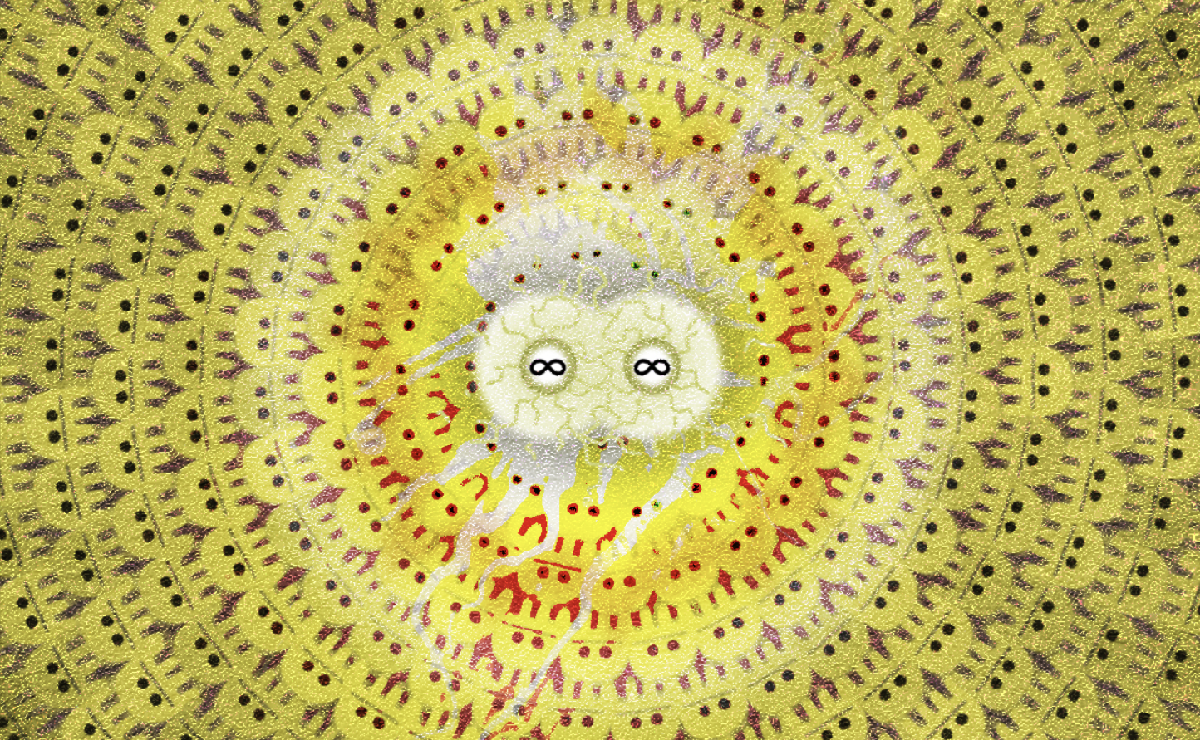
A shot from the secret expansion
Last week - on Thursday, July 18th - I got a call from Dušan, the head of the printshop I work with. "The books are finished," he said. "How do they look?" I asked. "Black!" but when I started panicking, he assured me that they were pretty. I spent the next few hours in a frozen state, barely eating lunch, because I was terrified that the print run was ruined. You never exactly know how to prepare the files in order for the physical product to look perfect - there are so many unpredictable factors connected to the raw paper material and the calibration of the printing machines. In the end, Dušan's statement about the books being black wasn't true - Workworkwork is simply darker than my previous games that mostly used white backgrounds. I think the printing came out beautifully and I'm really happy with it. Even now, a few days later, I'm still giddy when flipping through the pages of a copy.
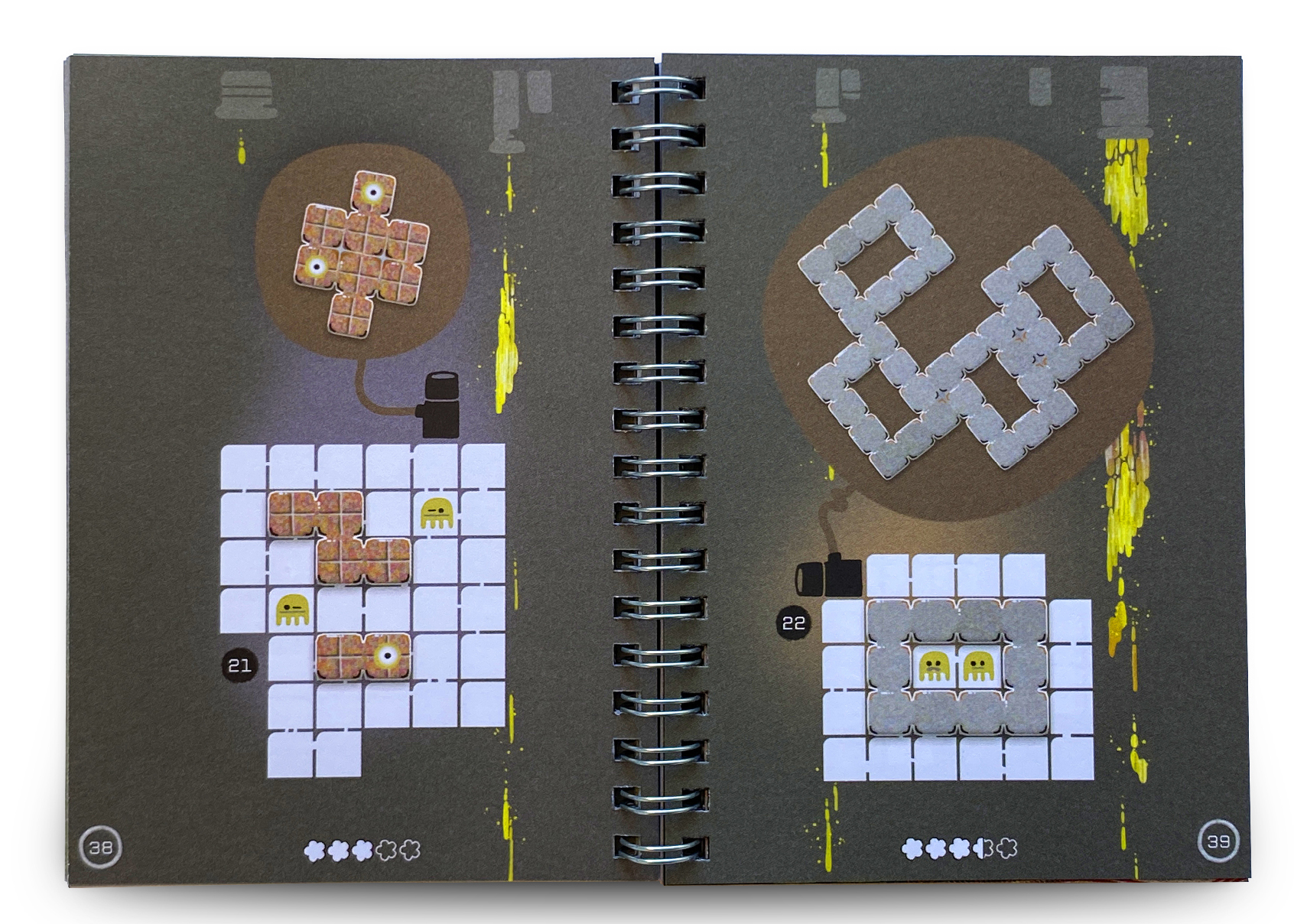
A spread of the physical book
Today we sent out all of the preorders. I truly hope that the game will resonate with all of the folks that will receive the books in their mailboxes. I'm curious how far will the game reach, which minds will it expand, how much enjoyment it will bring to people. As far as I'm concerned, workworkworking on Workworkwork was one of the best experiences of my life.
Thank you very much for reading this design diary and I wish you all the best.
Get Workworkwork
Workworkwork
Learn the ancient art of construction
| Status | Released |
| Category | Physical game |
| Author | Letibus Design |
| Genre | Puzzle |
| Tags | Abstract, Art Book, Board Game, Hand-drawn, mind-bending, Print & Play, Space, Working Simulator, zine |
| Languages | English |
| Accessibility | High-contrast |
More posts
- Patch Aug 1Aug 01, 2025
- Physical books available now!Jul 17, 2025
- Patch Jul 4Jul 04, 2025
- Patch Jun 27Jun 27, 2025
- Patch Jun 24Jun 24, 2025
- Workworkwork out now!Jun 23, 2025
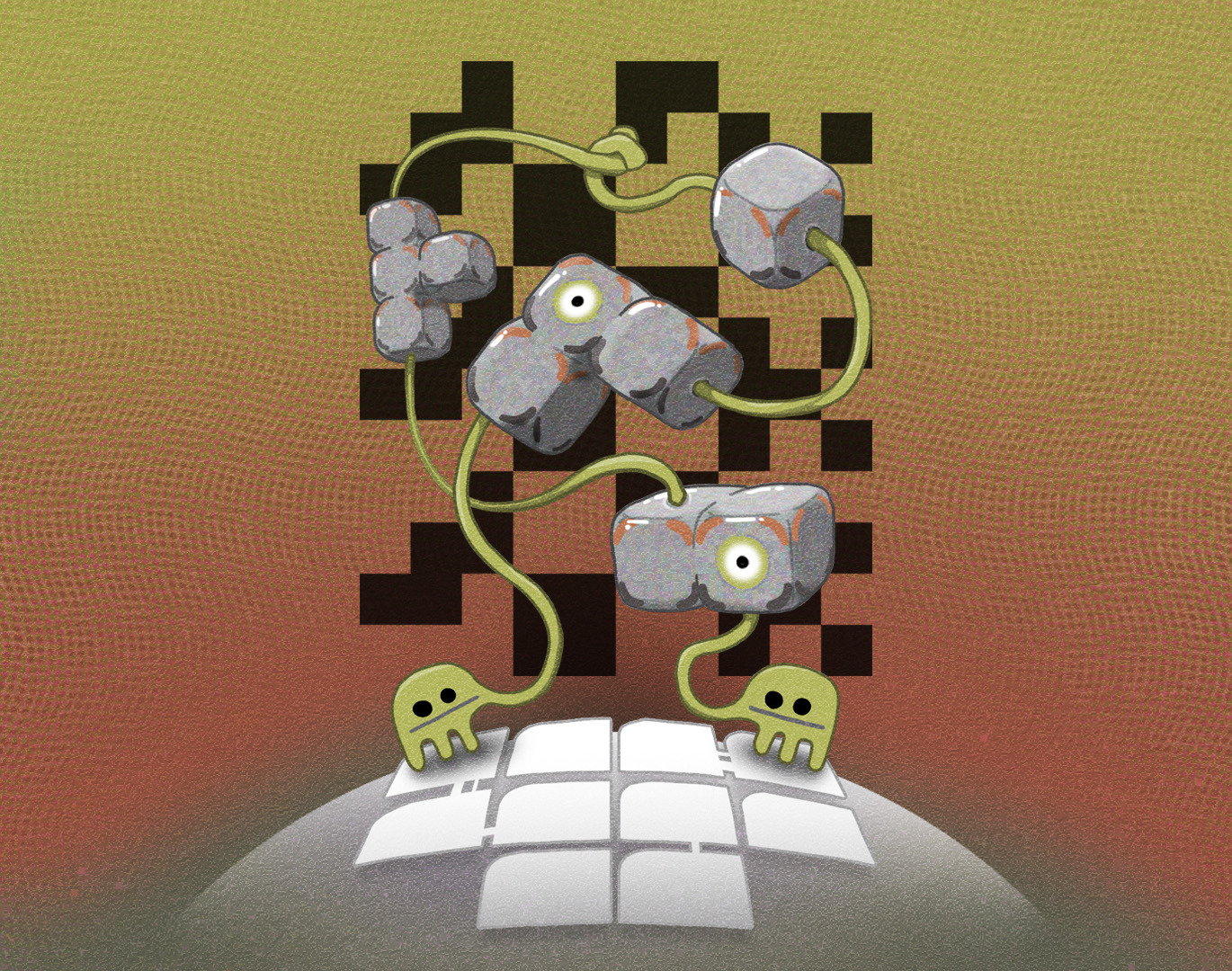
Comments
Log in with itch.io to leave a comment.
Fascinating insight into your creative process, than you for sharing!
The physical book arrived yesterday (all the way over in Seattle!) and I'm taking it slow and savoring the experience. You made a rare thing here; both elegant and unique. Really brilliant work :)
Glad the book arrived safely! Thank you for the kind words :)
The mental visualization experience in these puzzles is super fun. They should use these puzzles in schools! I'm dedicated to solving them all without using pen or paper. Reminds me very much of the process of searching the permutation space for optimal solutions in SpaceChem.
It also gave me the itch to make an automation/factory game based on your ruleset, lol... I'll let you know if that ever comes to anything.
Hehe, that would be quite a thing to experience! Especially since Zach-likes were a big inspiration on some aspects of the game :)
How far in are you? I think that at some pointit will become impossible to mentally solve the puzzles without any notes, but who knows, you might be a super human :D
#24
Doing 2-3 each morning when I wake up
Woah, if you're still solving only in your mind, that's mad impressive!